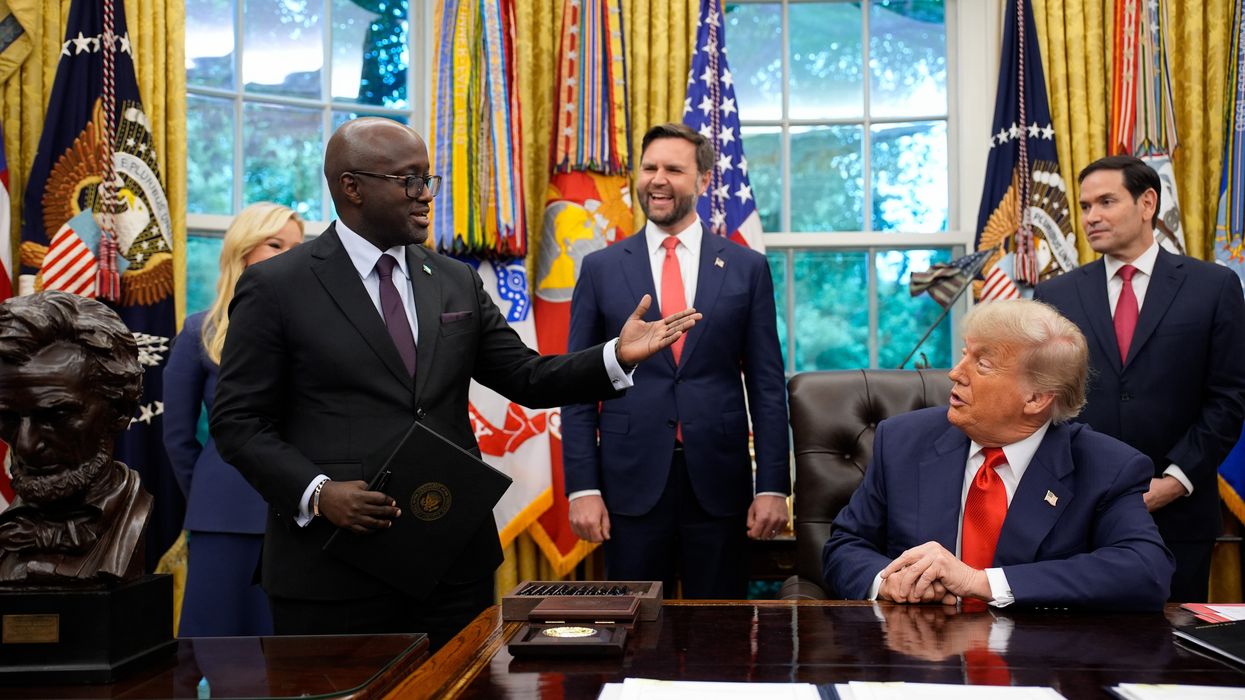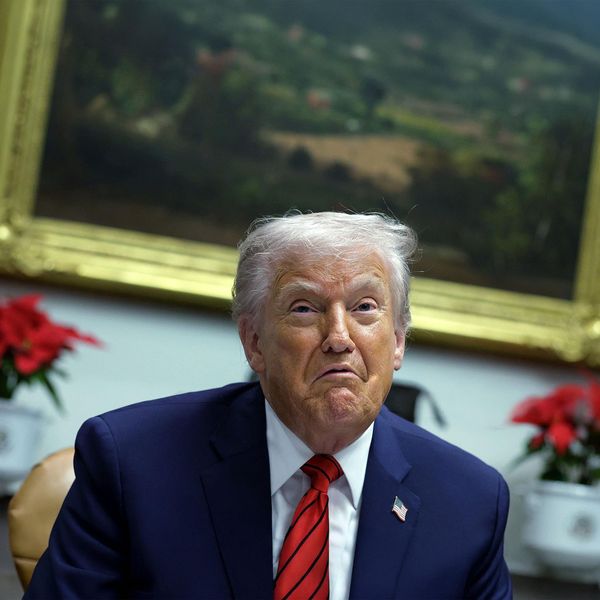Critics of overspending at the Pentagon were excited to see a Washington Post piece, first published yesterday, that initially gave the impression that the Trump administration was entertaining the idea of imposing substantial cuts in the Pentagon budget.
A revised version of the piece (same link), updatedThursday morning, opens as follows:
“Defense Secretary Pete Hegseth has ordered senior leaders at the Pentagon and throughout the U.S. military to develop plans for cutting 8 percent from the defense budget in each of the next five years, according to a memo obtained by The Washington Post and officials familiar with the matter — a striking proposal certain to face internal resistance and strident bipartisan opposition in Congress.”
But upon clarification, it became clear that the plan is not to reduce the Pentagon’s top line, but to shift any savings found in one part of the department to pay for other systems and activities more in line with the preferences of the administration.
A clue as to what those priorities are is contained in the internal memorandum itself, which exempts 17 categories of expenditure from cuts, including operations at the southern border, spending on missile defense and a new generation of nuclear weapons, acquisition of submarines, and certain categories of drones and other munitions.
The plan is a far cry from President Trump’s recent observation that the Pentagon budget could be cut by up to one-half, but to be fair, that suggestion was premised on a significant warming of U.S. relations with Russia and China, a condition that does not currently apply.
Given that its budget is soaring towards $1 trillion per year, and that it wastes untold billions on overpriced components and excess bureaucracy, there’s no question that the Pentagon can find money to reinvest in other priorities. But a better approach would be to apply a good portion of the savings to reducing the department’s top line.
Cuts in overall spending could come from the reduction or elimination of dysfunctional, overpriced, or dangerous weapon systems like F-35 combat aircraft, the Sentinel intercontinental ballistic missile, or heavy, vulnerable fighting ships like a new generation of aircraft carriers. It could save billions. It could also clear the way for the development of more reliable, effective replacements that are simpler to operate, easier to repair, and more relevant to the most likely conflicts of the future.
Eliminating ICBMs from America’s nuclear arsenal would be a particularly smart move. Not only is the cost of the new system growing at an alarming rate – an 81% increase in projected costs in just a few years time – but independent experts like former Clinton administration defense secretary William Perry have pointed out that they are among the most dangerous weapons possessed by the U.S. military.
That’s because a president would have only a matter of minutes to decide whether to launch them on warning of an attack, greatly increasing the risk of an accidental nuclear confrontation sparked by a false alarm.
As for the F-35, it is a multi-role system that does not perform any of its assigned roles particularly well. The plane has numerous technical problems large and small, to the point that, 23 years into its development, it still has major unresolved defects, and is only ready to fly about half the time due to maintenance issues. The Project on Government Oversight has rightly pointed out that the F-35 may never be fully ready for combat. For his part, Elon Musk has called the plane “an expensive and complex jack of all trades, master of none.”
He further pleaded that “in the name of all that is holy, let’s stop the worst military value for money in history that is the F-35 program!.”
And aircraft carriers, which can cost up to $13 billion each, are vulnerable to modern high speed missiles. Continuing to build them runs the risk of losing one or more of the ships in a future conflict.
Some of the above mentioned changes will no doubt require reserving some funds for investing in next generation systems, but the numbers of new systems will be determined in part by the strategy they are being produced to carry out. There would also be an opportunity to move away from the Pentagon’s habit of building fragile, gold-plated weapons and instead develop less complex, more reliable systems that would be cheaper to acquire and easier to maintain.
Savings – whether they are used for other Pentagon programs or to lower the department’s overall budget – are by no means guaranteed. If the administration does choose to cancel some major systems as part of its cost cutting drive at the Pentagon, it will run up against members of its own party like Sen. Roger Wicker (R-Miss.) and Rep. Mike Rogers (R-Ala.), who are seeking a $150 to $200 billion increase over currently proposed levels of Pentagon spending for the next four years.
In addition, F-35s, Sentinels, and aircraft carriers all have Congressional groupings dedicated to keeping the programs funded, largely because of the jobs and revenue they supply to states and districts of key members.
If the Trump team – or any administration – really wants to save substantial sums at the Pentagon, it should rethink America’s overly ambitious military strategy, an interventionist approach that is backed up by hundreds of overseas military bases, up to 170,000 troops stationed abroad, and counter-terror operations in dozens of countries.
Add to this near record U.S. arms sales for 2024, and the enormous focus America places on war and preparation for war becomes clear.
A more restrained strategy that refrains from launching unnecessary wars like America’s fiasco in Iraq, or from subsidizing aggression, as the U.S. has done by providing military aid to Israel for its campaign of mass slaughter in Gaza, would not only be less costly, it would make America safer. But a thorough rethinking of America’s national security strategy is a job that neither Congress or the Executive Branch has done in any serious way, either because members are busy fighting to get their jurisdictions the largest possible piece of the Pentagon budget pie, or because “independent” commissions meant to chart a new course are stocked with members who have financial ties to the weapons industry.
Getting rid of waste – whether it involves price gouging, excess bureaucracy, or a simple failure to keep track of the department’s assets – is a worthwhile mission. But the real path towards making America more secure at a lower cost must involve a genuine reevaluation of the nation’s strategic goals that moves away from a primary emphasis on military instruments of statecraft towards a more balanced approach that elevates diplomacy, cooperation, and economic and cultural engagement.
Moving around funds inside the Pentagon is not a sufficient response to the challenges we face going forward.
- $200 billion more for the Pentagon? ›
- Pentagon weapons programs are overloaded with unnecessary ... ›
- The non-empires strike back | Responsible Statecraft ›
- Trump's DOD spending order sounds good, but read the fine print | Responsible Statecraft ›
- The US Army is about to get smaller, especially in Europe | Responsible Statecraft ›
- Report: Pentagon will likely fail audits through 2028 | Responsible Statecraft ›
- Hegseth is taking the Army on another dead end ride to Asia | Responsible Statecraft ›
















